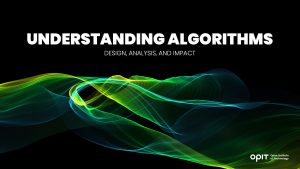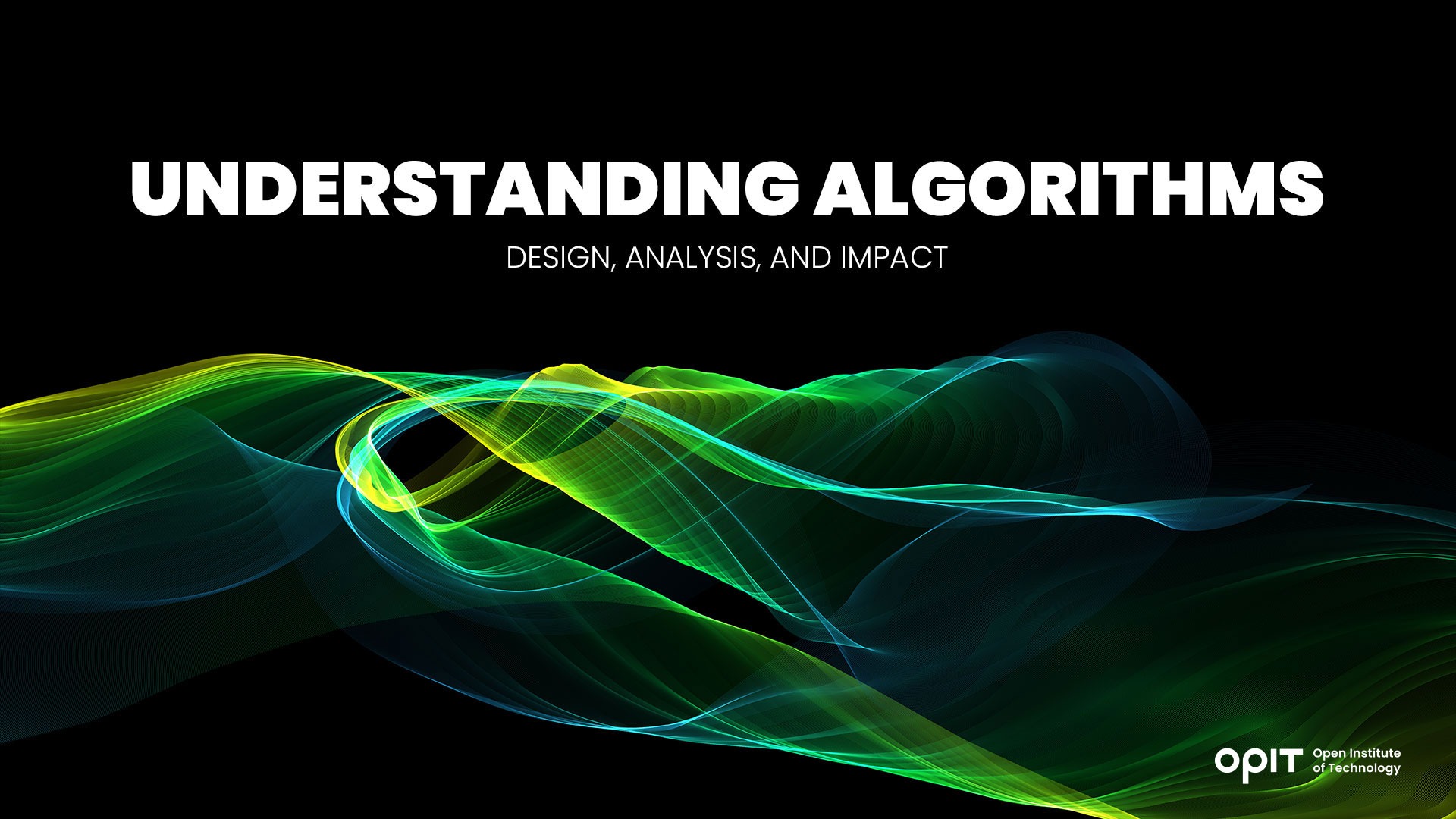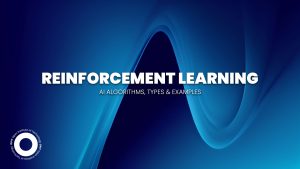Algorithms are the backbone behind technology that have helped establish some of the world’s most famous companies. Software giants like Google, beverage giants Coca Cola and many other organizations utilize proprietary algorithms to improve their services and enhance customer experience. Algorithms are an inseparable part of the technology behind organization as they help improve security, product or service recommendations, and increase sales.
Knowing the benefits of algorithms is useful, but you might also be interested to know what makes them so advantageous. As such, you’re probably asking: “What is an algorithm?” Here’s the most common algorithm definition: an algorithm is a set of procedures and rules a computer follows to solve a problem.
In addition to the meaning of the word “algorithm,” this article will also cover the key types and characteristics of algorithms, as well as their applications.
Types of Algorithms and Design Techniques
One of the main reasons people rely on algorithms is that they offer a principled and structured means to represent a problem on a computer.
Recursive Algorithms
Recursive algorithms are critical for solving many problems. The core idea behind recursive algorithms is to use functions that call themselves on smaller chunks of the problem.
Divide and Conquer Algorithms
Divide and conquer algorithms are similar to recursive algorithms. They divide a large problem into smaller units. Algorithms solve each smaller component before combining them to tackle the original, large problem.
Greedy Algorithms
A greedy algorithm looks for solutions based on benefits. More specifically, it resolves problems in sections by determining how many benefits it can extract by analyzing a certain section. The more benefits it has, the more likely it is to solve a problem, hence the term greedy.
Dynamic Programming Algorithms
Dynamic programming algorithms follow a similar approach to recursive and divide and conquer algorithms. First, they break down a complex problem into smaller pieces. Next, it solves each smaller piece once and saves the solution for later use instead of computing it.
Backtracking Algorithms
After dividing a problem, an algorithm may have trouble moving forward to find a solution. If that’s the case, a backtracking algorithm can return to parts of the problem it has already solved until it determines a way forward that can overcome the setback.
Brute Force Algorithms
Brute force algorithms try every possible solution until they determine the best one. Brute force algorithms are simpler, but the solution they find might not be as good or elegant as those found by the other types of algorithms.
Check out OPIT degrees
-
Career aligned
-
Fully Online
-
EU-accredited institution
Algorithm Analysis and Optimization
Digital transformation remains one of the biggest challenges for businesses in 2023. Algorithms can facilitate the transition through careful analysis and optimization.
Time Complexity
The time complexity of an algorithm refers to how long you need to execute a certain algorithm. A number of factors determine time complexity, but the algorithm’s input length is the most important consideration.
Space Complexity
Before you can run an algorithm, you need to make sure your device has enough memory. The amount of memory required for executing an algorithm is known as space complexity.
Trade-Offs
Solving a problem with an algorithm in C or any other programming language is about making compromises. In other words, the system often makes trade-offs between the time and space available.
For example, an algorithm can use less space, but this extends the time it takes to solve a problem. Alternatively, it can take up a lot of space to address an issue faster.
Optimization Techniques
Algorithms generally work great out of the box, but they sometimes fail to deliver the desired results. In these cases, you can implement a slew of optimization techniques to make them more effective.
Memorization
You generally use memorization if you wish to elevate the efficacy of a recursive algorithm. The technique rewrites algorithms and stores them in arrays. The main reason memorization is so powerful is that it eliminates the need to calculate results multiple times.
Parallelization
As the name suggests, parallelization is the ability of algorithms to perform operations simultaneously. This accelerates task completion and is normally utilized when you have a lot of memory on your device.
Heuristics
Heuristic algorithms (a.k.a. heuristics) are algorithms used to speed up problem-solving. They generally target non-deterministic polynomial-time (NP) problems.
Approximation Algorithms
Another way to solve a problem if you’re short on time is to incorporate an approximation algorithm. Rather than provide a 100% optimal solution and risk taking longer, you use this algorithm to get approximate solutions. From there, you can calculate how far away they are from the optimal solution.
Pruning
Algorithms sometimes analyze unnecessary data, slowing down your task completion. A great way to expedite the process is to utilize pruning. This compression method removes unwanted information by shrinking algorithm decision trees.
Algorithm Applications and Challenges
Thanks to this introduction to algorithm, you’ll no longer wonder: “What is an algorithm, and what are the different types?” Now it’s time to go through the most significant applications and challenges of algorithms.
Sorting Algorithms
Sorting algorithms arrange elements in a series to help solve complex issues faster. There are different types of sorting, including linear, insertion, and bubble sorting. They’re generally used for exploring databases and virtual search spaces.
Searching Algorithms
An algorithm in C or other programming languages can be used as a searching algorithm. They allow you to identify a small item in a large group of related elements.
Graph Algorithms
Graph algorithms are just as practical, if not more practical, than other types. Graphs consist of nodes and edges, where each edge connects two nodes.
There are numerous real-life applications of graph algorithms. For instance, you might have wondered how engineers solve problems regarding wireless networks or city traffic. The answer lies in using graph algorithms.
The same goes for social media sites, such as Facebook. Algorithms on such platforms contain nodes, which represent key information, like names and genders and edges that represent the relationships or dependencies between them.
Cryptography Algorithms
When creating an account on some websites, the platform can generate a random password for you. It’s usually stronger than custom-made codes, thanks to cryptography algorithms. They can scramble digital text and turn it into an unreadable string. Many organizations use this method to protect their data and prevent unauthorized access.
Machine Learning Algorithms
Over 70% of enterprises prioritize machine learning applications. To implement their ideas, they rely on machine learning algorithms. They’re particularly useful for financial institutions because they can predict future trends.
Famous Algorithm Challenges
Many organizations struggle to adopt algorithms, be it an algorithm in data structure or computer science. The reason being, algorithms present several challenges:
- Opacity – You can’t take a closer look at the inside of an algorithm. Only the end result is visible, which is why it’s difficult to understand an algorithm.
- Heterogeneity – Most algorithms are heterogeneous, behaving differently from one another. This makes them even more complex.
- Dependency – Each algorithm comes with the abovementioned time and space restrictions.
Algorithm Ethics, Fairness, and Social Impact
When discussing critical characteristics of algorithms, it’s important to highlight the main concerns surrounding this technology.
Bias in Algorithms
Algorithms aren’t intrinsically biased unless the developer injects their personal biases into the design. If so, getting impartial results from an algorithm is highly unlikely.
Transparency and Explainability
Knowing only the consequences of algorithms prevents us from explaining them in detail. A transparent algorithm enables a user to view and understand its different operations. In contrast, explainability of an algorithm relates to its ability to provide reasons for the decisions it makes.
Privacy and Security
Some algorithms require end users to share private information. If cyber criminals hack the system, they can easily steal the data.
Algorithm Accessibility and Inclusivity
Limited explainability hinders access to algorithms. Likewise, it’s hard to include different viewpoints and characteristics in an algorithm, especially if it is biased.
Algorithm Trust and Confidence
No algorithm is omnipotent. Claiming otherwise makes it untrustworthy – the best way to prevent this is for the algorithm to state its limitations.
Algorithm Social Impact
Algorithms impact almost every area of life including politics, economic and healthcare decisions, marketing, transportation, social media and Internet, and society and culture in general.
Algorithm Sustainability and Environmental Impact
Contrary to popular belief, algorithms aren’t very sustainable. The extraction of materials to make computers that power algorithms is a major polluter.
Check out OPIT degrees
-
Career aligned
-
Fully Online
-
EU-accredited institution
Future of Algorithms
Algorithms are already advanced, but what does the future hold for this technology? Here are a few potential applications and types of future algorithms:
- Quantum Algorithms – Quantum algorithms are expected to run on quantum computers to achieve unprecedented speeds and efficiency.
- Artificial Intelligence and Machine Learning – AI and machine learning algorithms can help a computer develop human-like cognitive qualities via learning from its environment and experiences.
- Algorithmic Fairness and Ethics – Considering the aforementioned challenges of algorithms, developers are expected to improve the technology. It may become more ethical with fewer privacy violations and accessibility issues.
Smart, Ethical Implementation Is the Difference-Maker
Understanding algorithms is crucial if you want to implement them correctly and ethically. They’re powerful, but can also have unpleasant consequences if you’re not careful during the development stage. Responsible use is paramount because it can improve many areas, including healthcare, economics, social media, and communication.
If you wish to learn more about algorithms, accredited courses might be your best option. AI and machine learning-based modules cover some of the most widely-used algorithms to help expand your knowledge about this topic.





